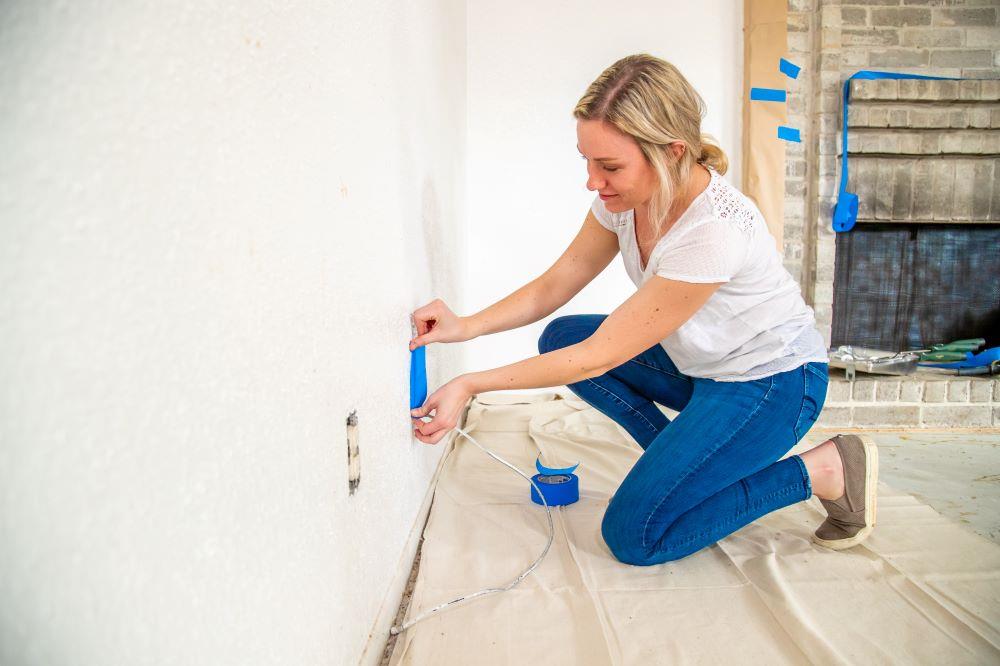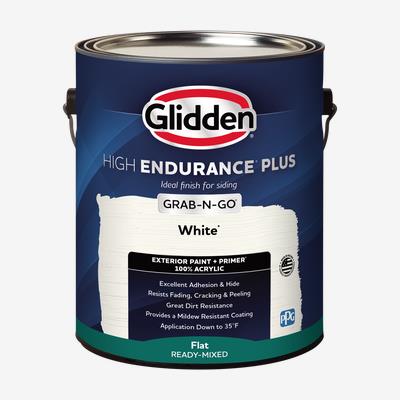Glidden® High Endurance® Plus Exterior Grab-N-Go® Paint + Primer
Gallon/3.78 L (01), Quart/946 mL (04)
Flat, Semi Gloss, Satin, Semi gloss

Product Details
Glidden® High Endurance® Plus Grab-N-Go Exterior Paint + Primer* is a high quality, exterior latex paint pre-tinted in our most popular colors so you can grab your paint and get going fast. This 100% acrylic paint brings the quality you expect from Glidden to your outdoor projects with its excellent hide and adhesion, resistance to fading, cracking and peeling, and great dirt resistance. This exterior formula protects against UV rays resists color fading. It also provides a mildew resistant coating that can be applied in low temperatures (above 35 degrees Fahrenheit).
Features:
- Excellent hide & adhesion
- Resistant fading, cracking, & peeling
- Great dirt resistance
Looking for a datasheet? Access PPG's full datasheet portal here or visit https://products.ppgac.com/
| Code | Finish | Base | Sizes | Download |
| 7913GEP | Flat | Ready Mix Custom Color | Gallon/3.78 L (01) | |
| 7915GEP | Semi Gloss | Ready Mix Custom Color | Gallon/3.78 L (01) | |
| 7917GEP | Satin | Ready Mix Custom Color | Gallon/3.78 L (01) | |
| 7921GEP | Semi Gloss | Ready Mix Black | Gallon/3.78 L (01) | |
| 7921GEP | Semi gloss | Ready Mix Black | Quart/946 mL (04) | |
| 7923GEP | Flat | Ready Mix Black | Quart/946 mL (04) | |
| 7925GEP | Semi Gloss | Ready Mix Custom Color | Gallon/3.78 L (01) | |
| 7927GEP | Satin | Ready Mix Black | Quart/946 mL (04) | |
| 7929GEP | Satin | Ready Mix Custom Color | Gallon/3.78 L (01) | |
| 7930GEP | Flat | Ready Mix Custom Color | Gallon/3.78 L (01) | |
| 9000GP | Flat | Ready Mix White | Gallon/3.78 L (01) | |
| 9000GP | Flat | READY MIX WHITE | Quart/946 mL (04) | |
| 9200GP | Satin | Ready Mix White | Gallon/3.78 L (01) | |
| 9200GP | Satin | READY MIX WHITE | Quart/946 mL (04) | |
| 9400GP | Semi Gloss | Ready Mix White | Gallon/3.78 L (01), Quart/946 mL (04) |

